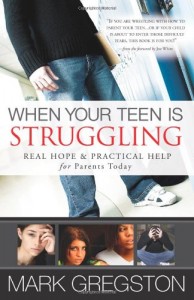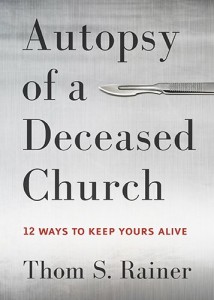
by Karen Kinnaird | Jul 9, 2015
Let’s lighten up a little today. Deep concerns over recent current events have me feeling heavy and weighed down. Perhaps today would be appropriate for a lighter topic. Actually, it’s a lot lighter – a summer recipe with quinoa. Have you tried it?
Quinoa has become one of my favorite foods. I stumbled on this salad recipe last year and it is one of my favorites, especially on a hot summer day. Quinoa, pronounced “keen-wah” is a grain that is becoming increasingly popular. Even the Pope will receive a quinoa communion wafer during his visit to Bolivia this week! The National Restaurant Association has named quinoa as a hot trend in side dishes among chefs. Quinoa is gluten free, full of fiber, rich in iron and vitamin B, and has a nutty flavor.

Quinoa Salad (Serves 6)
(Photo: Karen Kinnaird )
The Whole Grains Council states, “It’s not surprising that quinoa supports good health, as it’s one of the only plant foods that’s a complete protein, offering all the essential amino acids in a healthy balance.” Referred to as the “mother grain” and as a “super food” quinoa is available in white, red and black. Quinoa flakes and flour are available, usually at health food stores.
- Bring to a boil over low heat:
- 1 cup quinoa
- 1/2 tsp salt
- 1 1/2 cups water
- Cover and simmer slowly for 15 to 20 minutes until the grains are cooked but still firm. Remove from heat and add:
- 2 diced tomatoes
- 1 cup diced bell peppers
- 1 cup diced cucumber
- 1 cup chopped kalamata olives
- 1/4 cup chopped green onion
Toss everything together and add Lemon Oregano Dressing.
Lemon Oregano Dressing
Whisk together well:
- 1/4 cup EVOO
- 2 tbsp honey
- juice and finely minced zest of one lemon
- 1 tbsp dried oregano
- 1/2 tsp kosher salt
- 1/2 tsp black pepper
This dish is fresh, healthy and filling. The combinations are endless. Give it a try!

by Karen Kinnaird | Jun 29, 2015
Is your teen struggling? Do you feel like they are pushing you away? Do you have a tween who is about to embark on the teen years? Do you work with teens? If so, this is a must read! Teenagers are living in a very different world than the one their parents grew up in.
Today’s parenting requires a different style. Even the best intentioned Christian families are not immune to the effects of todays out of control culture. Published by Harvest House in 2007, When Your Teen is Struggling by Mark Gregston is not a new book but an excellent resource that offers hope and advice. 
Mark Gregston, founder and executive director of Heartlight Ministries, is a popular author, radio host and speaker. He has served families and counseled youth for more than 40 years. He has helped turn around more than 2,500 teens through his residential counseling center. He offers experience and insight along with compassion and understanding. He has a gift for being able to get to the root of a teen’s issue and design a plan to bring healing.
A few teachings from the book rose to the surface for me:
1. Just as kids change as they age, parents need to change the way they parent. Gregston warns that lectures must move to discussion, and a parent’s role must change from protector to preparer. Parents must be prepared for the teen years in advance and have a plan in place. This may prevent future issues.
2. Parents must look at their child’s struggle with the eyes of their heart. Look beyond the surface to discover what is hidden. The behavior is not the issue; it’s a symptom of something greater. Parents must get to the root of the issue.
3. Pain is valuable. No matter how badly we want to bail our kids out of the consequences to their poor choices to avoid pain for them, we must not. Gregston notes that to avoid pain allows childish thinking and foolish behavior to continue and results in greater pain later in life. For some parents this, itself, is very painful, but it must be done. Teens today are immature because they have been rescued too many times. Let them learn from their mistakes and grow up.
4. Don’t lose the relationship. Struggling teens need to know their parents love them. Tough love loves regardless of how parents are treated and even when the teen goes against everything the family stands for. In What’s Happening to My Teen, Gregston states, “I can assure you that your posture during this dark time will affect the amount of time your child spends wandering aimlessly and the quality of relationship you will have with him when he gets to the other side of his rebellious adventures.”
“This struggle has come to your family for a reason. You’re the parent of this child for a reason. The timing is not accidental. You probably don’t understand all the reasons for these struggles, but that doesn’t diminish their purpose or the plan behind them. They are part of the journey God has for you and your child. And He’ll use it all.” Mark Gregston
Gregston offers two very practical chapters on developing family belief systems and developing a rule and consequence for each belief. Issues concentrate on respect, obedience and honesty. The book is also filled with many real life case studies of teens and their families. Each scenario describes the behavior, the root problems and the action that was applied to help the teen. I was pleasantly surprised to read the outcome of these teens’ lives in the “Where Are They Now” chapter at the end of the book.
Gregston has also written What’s Happening to My Teen: Uncovering the Sources of Rebellion, Parenting Teens in a Confusing Culture, Tough Guys and Drama Queens, and more. His app Heartlight Parenting Today’s Teens features daily one minute radio programs and a weekend radio program addressing various issues that parents face today. The website http://www.heartlightministries.org/ is a one-stop-shop for parents searching for help with their teens.

by Karen Kinnaird | Jun 11, 2015
 It’s interesting how the simplest things can have the most profound effect. Diana Davis’ new book 6 Simple Steps: Finding Contentment and Joy as a Ministry Wife published by New Hope offers a fresh look at life for a minister’s wife. Women serving alongside any type of minister will benefit from the principles taught. While those new to the ministry will particularly benefit from the book, veteran ministry wives will find encouragement, inspiration and fresh ideas.
It’s interesting how the simplest things can have the most profound effect. Diana Davis’ new book 6 Simple Steps: Finding Contentment and Joy as a Ministry Wife published by New Hope offers a fresh look at life for a minister’s wife. Women serving alongside any type of minister will benefit from the principles taught. While those new to the ministry will particularly benefit from the book, veteran ministry wives will find encouragement, inspiration and fresh ideas.
In a clever way, Davis ties each of the 6 steps to finding contentment and joy with the fruit of the Spirit. The steps are just that- simple, but they are well-developed and full of wisdom. The steps are:
- Just relax. The Holy Spirit produces peace. Ministers’ wives are encouraged to be ourselves and relax living in the fishbowl. Davis writes, “New Christians are watching more mature Christians to learn how to live for God. Nonbelievers are watching to see if God truly makes a difference in your life.”
- Simply smile. The Holy Spirit produces joy. Davis notes that a pastor’s wife helps set the pace for joy in a church. Joy is a choice. The chapter includes tips on making memories and carrying on conversations.
- Love lavishly. The Holy Spirit produces love. This chapter offers many ideas on how to show love to our husbands, love other women leaders in the church, staff wives and the community God has placed us in.
- Say “We”. The Holy Spirit produces kindness. Davis writes, “When a ministry wife grasps the “we” aspect of her marriage, family and church, she loses any semblance of selfishness and performance.” Powerful advice! “We enhancers” abound in this chapter.
- Be resilient. The Holy Spirit produces peace, patience, gentleness and self-control. Trials and troubles of ministry will come. Davis offers help on how to respond in a godly fashion, reduce stress and conquer loneliness during those rough seasons.
- Serve passionately. This outstanding chapter will help women find their ministry while leaving room for those things that only she can do. Tips for public speaking and personal evangelism are included.
Each chapter is full of personal stories, Scriptures, teachings and quotes from various ministry wives. At the end of each chapter, Davis offers pages of fresh ideas to incorporate and take action with each step. There is also a group study guide at the end of the book.
At first glance, I thought the book would be basic and a quick read, but I found myself slowing down to take in the valuable truths. As Davis suggested, I marked it heavily, making notes for the ideas I wanted to incorporate into my own life so I could go back and review. The book can almost be used as a handbook. While the concepts are simple, they are ones that make a lasting impact. The book encouraged and reenergized me. It reminded me to appreciate the unique call on my life. It encouraged me to relish every opportunity.
Do you need to make some adjustments to your life as a ministry wife? Do you desire to maximize your influence? Add 6 Simple Steps to your summer reading list. Allow Davis’ words to reaffirm God’s call on your life and reignite the passion for the position God has placed you in.

by Karen Kinnaird | May 14, 2015
It’s our last one. This weekend, we will watch our youngest child walk across the stage and get her high school diploma. High school graduation is the bitter and the sweet end of a season. It’s the closest thing our culture has to a rite of passage. It’s an event that many mothers dread, clinging to every last minute they have with their child. It’s an event that makes us look back over the past 18 years and reflect.
High school graduation is an event that also brings many emotions for mothers. Some experience pride, joy and anticipation. Some experience disappointment, relief and even fear. We hope and pray that everything is always going to go well for our child. We design a mental plan and map out how we want our child’s life to take shape. But sometimes things don’t happen like we planned. This past year has caused me to reexamine some of my own thoughts and expectations and see things from a different perspective.
Perhaps you hoped that your son would be a star football player, yet chooses to write music and play his guitar quietly in his room? Why not change your perspective and be grateful for the sensitivity, the creativity and the musical talent? Some have little appreciation for music and the arts.
Perhaps you have a daughter who goes to every party, every dance, every social occasion and you have spent a small fortune on dresses and accessories? Thank God for that socialite! She has friends, is emotionally well-adjusted and happy. Not every student goes to the prom. Some struggle getting out of bed in the morning.
Perhaps your child is not involved in organizations at school, but prefers part-time employment? Why not change your perspective and appreciate the value of hard work and income? Some students have no interest in working.
Perhaps you planned for your child to go to college but instead he desires to learn a skill or trade? Our society puts so much emphasis on grades and testing. We judge students by those standards, often overlooking immense talent and potential. Not every student will cut it in math and science. Mothers must give themselves permission to get past this and strive to instill healthy self-esteem and confidence in their child. Thank God that your son has an interest and a direction. Some struggle for years trying to find their way.
Despite the differences, there are things in all our children’s lives that we can be grateful for. Our three red-headed children, although born to the same parents and raised in the same home are completely different from each other. One is artsy and spontaneous and became a vocalist and music therapist. One is quiet and disciplined and became an accountant. The third is still being molded into the young lady God intends her to be. God has made each one of them unique with their own distinct personalities, strengths and passions. How do we handle this? Looking back over the past 26 years I would suggest:
- Love each child equally and unconditionally. Each one is fearfully and wonderfully made.
- Appreciate and embrace their unique personalities. God has a unique plan for each one.
- Accentuate their strengths and interests. Give them opportunities to explore and grow.
- Remember your time is limited. Do everything you can to pour into them in the short amount of time you have.
And finally, as those caps are thrown into the air, perhaps that should be our time to release them to God and let them go. For this Mom who didn’t get anesthesia with the birth of this graduate, it is just as painful. But, the writer of Ecclesiastes notes that there is a time for everything. Even graduating and flying out of the nest. The secret to peace is to accept God’s timings. Despite the joy and the pain, He does make everything beautiful in its time. Perhaps you need to change your perspective. It’s normal and healthy for kids to grow up, become independent and move on. Don’t dread it, enjoy it! Let’s get out of the way, let them go, and trust God to work out HIS perfect plan.

by Karen Kinnaird | Apr 16, 2015
Autopsy. Webster describes it as the examination of a dead body to find out the cause of death. That’s exactly what Thom Rainer does in his book Autopsy of a Deceased Church. Published in 2014 by B&H Publishing Group, this short 102-page book is easy to read and serves as a wake-up call to churches across America.
Rainer, president and CEO of LifeWay Christian Resources, writes about the results of 14 church autopsies. The churches are diverse in denominational or non-denominational background, location and demographics. It is Rainer’s hope that this book will serve as a warning sign and hopes that “God will raise up an army of church members who are no longer satisfied with business as usual.”
Part 1 includes 10 chapters describing 10 common threads of the churches that died. Some are:
- The church refused to look like its changing community
- The budget moved to an inward focus
- Members focused on their own preference of worship style
- The church rarely prayed together
- Pastoral tenure decreased to every 2-3 years
- The church had no clear purpose
- The past was the hero
One of the most important quotes to me was, “The most pervasive and common thread of our autopsies was that the deceased churches lived for a long time with the past as hero. They held on more tightly with each progressive year. They often clung to things of the past with desperation and fear. Any when any internal or external force tried to change the past, they responded with anger and resolution: ‘We will die before we change.’ And they did.” (pg. 18)
Part 2 is written in a way that one can diagnose their church into one of four categories. Rainer offers responses to each diagnosis that can be adapted and applied to each situation. He suggests that the following statistics reflect the actual condition of churches across America:
- Healthy- 10%
- Symptoms of Sickness- 40% – 150,000 churches
- Very Sick 40%- 150,000
- Dying- 10%
Rainer points out that these numbers are not precise, but in his opinion and based on his experience, they reflect the condition of churches across America.
Some of his suggestions to churches seeking healing are:
* Pray and ask God to open the eyes of leadership and church members
* Audit how church members spend their time and how the church spends money
* Confess the need, pray for strength and be willing to radically change
Rainer goes on to encourage the dying church to give funds to another church, donate the building to a new church start, merge with another church or turn the leadership over to people who actually reside in a transitional neighborhood.
Each chapter ends with a Prayer Commitments and Questions for Further Thought.
While this is very discouraging, it is not hopeless. In Matthew 16, Jesus told Peter that the Church will not die. He said, “On this rock I will build my church, and the forces of Hades will not overpower it.”
But, many of our local congregations are either sick or dying. What kind of church are you in? If it is showing signs of sickness are you willing to ask God to open your eyes and see the true state of your church and admit that it might be in trouble?
Are you willing to change? Do you have the courage to speak up, not as a complainer but in love?
Are you willing to do your part to bring healing and new growth to your congregation?








